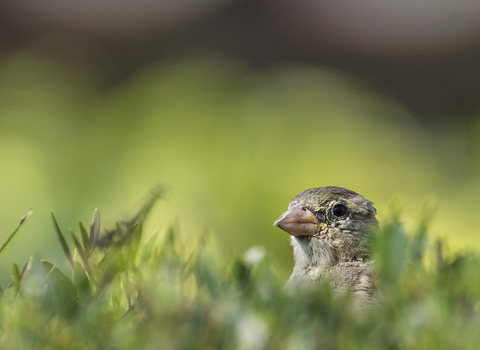Recording wildlife is an easy way to get involved in wildlife conservation. It helps to monitor wildlife across the county to understand the distribution of animals and plants in Norfolk. Your records can help us locate areas which are especially important for wildlife and identify species in decline or under threat.
Each season we ask you to help Norfolk's wildlife by sending us your records of three species. You don't have to be an expert – all you need to do is tell us when and where you encounter them. This could be through seeing – or hearing – the species! Use the form below to submit your sightings online.
Summer 2025
With the disappearance of Norfolk’s once abundant meadows, churchyards are now playing an important role as sanctuaries for much of our declining wildlife. Many of Norfolk’s churchyards are ancient plots of land, often untouched by the modern world of fertilisers and chemical pesticides. This makes them wonderful places for native wildflowers, and being relatively undisturbed, fantastic for other wildlife too — from lichens to swifts and bats to butterflies.
With the support of the Diocese of Norwich, NWT runs the Churchyard Conservation Scheme to survey, monitor and advise on the wildlife-friendly upkeep of our county’s churchyards. With over 700 churches in Norfolk this is a massive task, so we are enlisting your help with this summer’s spotter survey. We have identified three species of native wildflower that are good indicators of a possible wildlife-friendly and biodiverse churchyard.
Help us put these plants on the map by submitting your records below.
- Oxeye daisy
- Burnet-saxifrage
- Lady’s bedstraw
Why share your sightings?
Norfolk is a hot bed for seeing wintering waterfowl. During December, January and February our resident duck numbers are increased by birds choosing to spend the winter here from other parts of the world, making Norfolk a great place to get to grips with identifying many different duck species. Pochard, pintail and wigeon hold a UK conservation status of either red or amber listed. With red listed being globally threatened, having seen a rapid decline in recent years, and amber species being in unfavourable conservation status in Europe.
Is there any point in sharing sightings of common species?
The answer is definitely yes, if only for the reason that if they are not recorded how do you know they are common? Common species may have interesting distributions or habitat preferences, and in any case they may suddenly become less common. Furthermore, by becoming familiar with common species the less usual become more obvious – and an interest can develop.
How to spot oxeye daisy
How to identify
Flowers: May to September
Large long-stalked daisy, with slightly hairy spoon-shaped toothed leaves, the plant is between 20cm to 70cm tall. Its alternative name, moon daisy, is apt; as its big yellow eye seems to glow on a moonlit summer’s night.
How to spot burnet-saxifrage
How to identify
Flowers: July to September
This downy, perennial member of the carrot family has a tough, slightly ridged stem and an umbel of white flowers. It is highly nutritious for livestock, and in the past was commonly cultivated for fodder.
How to spot lady’s bedstraw
How to identify
Flowers: July to August
Small, narrow leaves that appear in whorls on its angular stems, with dense clusters of yellow flowers. These full ‘frothy’ flowers smell of honey. Their name derives from a custom of including it in the straw-filled mattresses of women about to give birth.
We want to take good care of your information!
We will keep your details secure at all times. We will use your details to process and respond to your submission of information.
Norfolk Wildlife Trust (NWT) and Norfolk Biodiversity Information Service (NBIS) are working together under a Data Sharing Agreement to process the records from this project and may securely share your details with each other for this purpose only. For more information, you can contact either of us for details of our full Privacy Policy.
If you wish to receive any further information from Norfolk Wildlife Trust, please opt in by visiting our ‘Update your preferences’ page. We never sell or share your details with any other third party for their own use.
This is our summarised privacy notice. You can view our full privacy policy below, or contact us for a postal copy.
Layers
Thank you for taking part!
Have you seen any other wildlife?
Please share your wildlife records with Norfolk Biodiversity Information Service.




